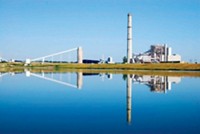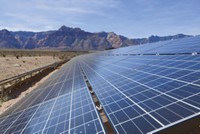Advertisement
Grab your lab coat. Let's get started
Welcome!
Welcome!
Create an account below to get 6 C&EN articles per month, receive newsletters and more - all free.
It seems this is your first time logging in online. Please enter the following information to continue.
As an ACS member you automatically get access to this site. All we need is few more details to create your reading experience.
Not you? Sign in with a different account.
Not you? Sign in with a different account.
ERROR 1
ERROR 1
ERROR 2
ERROR 2
ERROR 2
ERROR 2
ERROR 2
Password and Confirm password must match.
If you have an ACS member number, please enter it here so we can link this account to your membership. (optional)
ERROR 2
ACS values your privacy. By submitting your information, you are gaining access to C&EN and subscribing to our weekly newsletter. We use the information you provide to make your reading experience better, and we will never sell your data to third party members.
Environment
EPA Proposes CO2 Cuts For Power Plants
Climate Change: Administration unveils program that coal proponents promise to fight
by Jeff Johnson
June 5, 2014
| A version of this story appeared in
Volume 92, Issue 23

The head of the Environmental Protection Agency announced this week the first-ever proposal to cut carbon dioxide emissions from U.S. coal-fired power plants. The proposal would require state governments to develop plans by June 2016 that would result in 30% less CO2 emissions from coal-fired power plants in 2030 than were emitted in 2005.
EPA Administrator Gina McCarthy underscored benefits she said would spring from the CO2 reductions. Most directly relate to climate change and global warming, such as slowing sea-level rise and forestalling higher global temperatures. Others are cuts in air pollution from coal-fired power plants, such as a 25% reduction in particulate matter, nitrogen oxides, and sulfur dioxide.
“The plan represents a concrete step toward reducing CO2emissions that the overwhelming number of scientists have said is critical to addressing climate change,” ACS President Tom Barton says. “The most recent National Climate Assessment dramatically illustrates that every region of the U.S. and every economic sector is being adversely impacted by climate disruption, and we need to take action now.”
Coal-fired power plants generate about 40% of U.S. CO2 emissions and 30% of U.S. greenhouse gases, according to EPA. The proposal would cut overall U.S. greenhouse gas emissions by 9% from 2005 levels by 2030 and is part of President Barack Obama’s plan to address climate change.
The proposal identifies state-specific options for reducing CO2 emissions. States can choose to cut CO2 emissions by shifting away from coal to natural gas or to renewable energy sources or by reducing coal use through energy efficiency at power plants, at factories, or in consumers’ homes, McCarthy said.
Despite the fanfare, the proposed reductions will have a modest impact on global climate change and one-third of cuts have already been achieved. An Energy Information Administration study released last week notes that U.S. energy-related CO2 emissions had dropped to 10% below 2005 levels as of last year.
Still, the federal proposal recognizes the need to limit CO2 from coal.
“We are making these reductions for the sake of our children,” Obama said to supporters, predicting a “heated debate” and many “efforts to put out misinformation and to make spin overwhelm substance and public relations overwhelm science.”
Republican leaders of the House of Representatives Energy & Commerce Committee blasted the proposal and set a hearing on the plan for June 16. Committee Chairman Fred Upton (R-Mich.) predicted the President’s plan would cause electricity rates to skyrocket and send manufacturing jobs overseas, hamstringing U.S. economic recovery.
The proposal is opposed by many in industry. But while the American Chemistry Council warned that parts of the country could see higher energy prices, the chemical industry trade association also welcomed the flexibility the Administration offered to states to design plans. ACC is pleased with the emphasis on energy efficiency, which, it said, “is one of the most cost-effective ways to achieve emissions reductions.”
The National Association of Clean Air Agencies, an organization of state regulators, applauded the proposal and the yearlong discussion between states and EPA about it, Executive Director S. William Becker said. The proposal will be “a heavy lift,” Becker continued, but it gives regulators flexibility and time to develop strategies as well as credit for past actions to cut emissions.
About 1,000 operating power stations in the U.S. will be affected, EPA says. The U.S. has an aging and inefficient coal-fired fleet with an average age of 42 years and many plants more than a half-century old. Coal units provide the largest share of U.S. electricity at about 39%. This, however, is a decline from nearly 50% a few years ago.





Join the conversation
Contact the reporter
Submit a Letter to the Editor for publication
Engage with us on Twitter